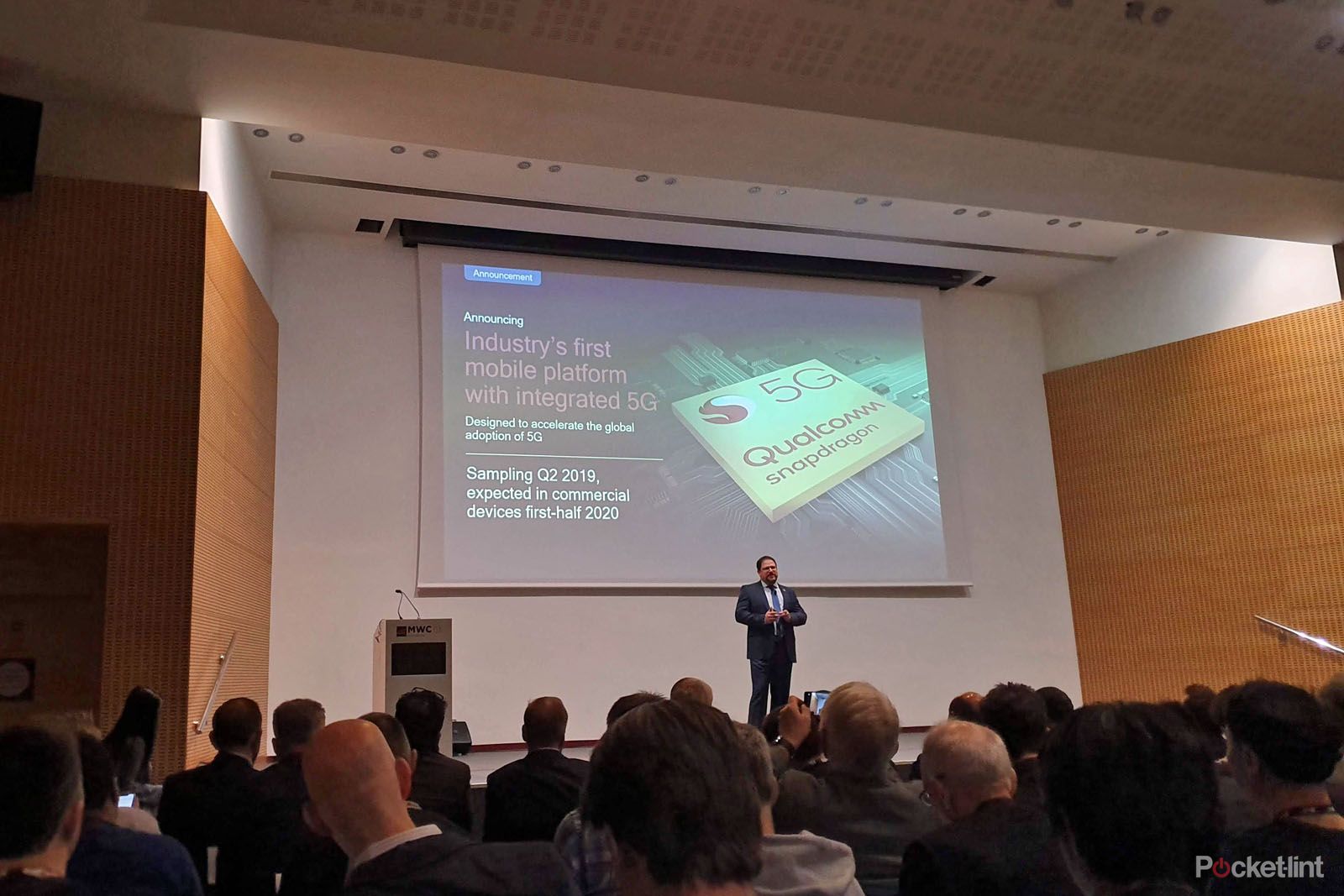While Qualcomm is making sure that everyone knows that 5G is here, it is also talking about the next step forward - and that's an integrated 5G system-on-chip solution - which is an important move.
The current arrangement with the Qualcomm Snapdragon 855 is that you have a separate modem, allowing manufacturers to take the Snapdragon 855 as a 4G option or as a 5G option. That also means that while the first run of 5G phones will use the X50 modem, some models later in the year might use the X55 - the second-gen 5G modem. Modularity allows some flexibility.
The aim of an integrated solution is to have a simpler option for those OEMs (original equipment manufacturers) who want to move to 5G, but want a more accessible or more affordable solution. Using an all-in-one platform should make that possible. It's also a better solution for devices that aren't smartphones - so it could be used in a wide range of devices that need the connectivity.
"The integration of our breakthrough 5G multimode modem and application processing technologies into a single SoC is a major step in making 5G more widely available across regions and tiers," said Cristiano Amon, president of Qualcomm.
That's important because the advantages that 5G bring shouldn't be the preserve of those who can afford to buy the latest flagship hardware.
No sooner had Qualcomm announced that the new integrated 5G solution would soon be available for testing, but Samsung was on stage talking about the long relationship it had with Qualcomm, closing by saying it would soon be offering a device on the new platform. That's something of a confirmation, but is very light on detail at the moment.
This doesn't mean that Snapdragon will all be integrated - the company will likely continue a modular approach across different Snapdragon solutions - and it doesn't mean that Samsung will exclusively use Qualcomm for its 2020 phones.
As for the expected timeline, Qualcomm's new integrated solution will be available for testing towards the end of 2019, with devices launching in 2020.

